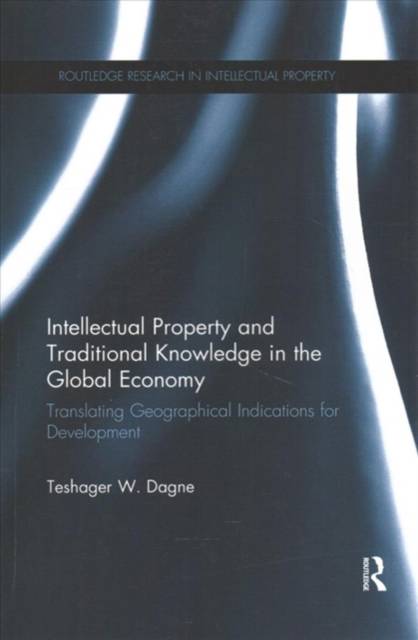
- Afhalen na 1 uur in een winkel met voorraad
- Gratis thuislevering in België vanaf € 30
- Ruim aanbod met 7 miljoen producten
- Afhalen na 1 uur in een winkel met voorraad
- Gratis thuislevering in België vanaf € 30
- Ruim aanbod met 7 miljoen producten
Intellectual Property and Traditional Knowledge in the Global Economy
Translating Geographical Indications for Development
Teshager W DagneOmschrijving
Arising from recent developments at the international level, many developing countries, indigenous peoples and local communities are considering using geographical indications (GIs) to protect traditional knowledge, and to promote trade and overall economic development. Despite the considerable enthusiasm over GIs in diverse quarters, there is an appreciable lack of research on how far and in what context GIs can be used as a protection model for traditional knowledge-based resources.
This book critically examines the potential uses of geographical indications as models for protecting traditional knowledge-based products and resources in national and international intellectual property legal frameworks. By analysing the reception towards GIs from developing countries and advocates of development in the various legal and non-legal regimes (including the World Trade Organization, World Intellectual Property Organization, and the Convention on Biological Diversity and the Food and Agricultural Organization), the book evaluates the development potential of GIs in relation to ensuing changes in international intellectual property law in accommodating traditional knowledge. Teshager W. Dagne argues for a degree of balance in the approach to the implementation of global intellectual property rights in a manner that gives developing countries an opportunity to protect traditional knowledge-based products.
The book will be of great interest and use to scholars and students of intellectual property law, public international law, traditional knowledge, and global governance.
Specificaties
Betrokkenen
- Auteur(s):
- Uitgeverij:
Inhoud
- Aantal bladzijden:
- 242
- Taal:
- Engels
- Reeks:
Eigenschappen
- Productcode (EAN):
- 9781138212374
- Verschijningsdatum:
- 15/07/2016
- Uitvoering:
- Paperback
- Formaat:
- Trade paperback (VS)
- Afmetingen:
- 156 mm x 234 mm
- Gewicht:
- 344 g

Alleen bij Standaard Boekhandel
Beoordelingen
We publiceren alleen reviews die voldoen aan de voorwaarden voor reviews. Bekijk onze voorwaarden voor reviews.











